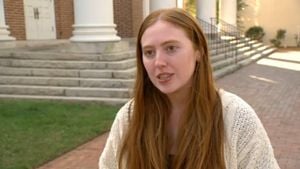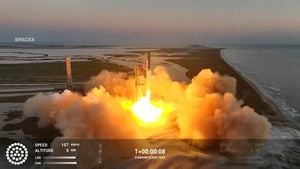Following the recent cease-fire between Hezbollah and Israel, the southern Lebanese city of Nabatieh is witnessing the return of its residents. This significant event marks the beginning of the long and arduous reconstruction process after the area sustained severe damage during the recent conflict. Residents began returning home just one day after the agreement aimed to stabilize tensions, allowing approximately 1.2 million Lebanese who were displaced by the fighting the opportunity to reconnect with their lives and properties. The hope is palpable; if this cease-fire holds, it could provide much-needed relief not only to Lebanese citizens but also to tens of thousands of Israelis who had fled their homes along the border during the escalation of hostilities.
Visibly shaken but resolute, residents are trickling back to their neighborhoods, surveying the destruction and gathering their belongings. Businesses are attempting to reopen, and families are facing the dual challenges of recovery and rebuilding. Mahmoud, a local shopkeeper, expressed his relief and optimism, stating, “We will rebuild, and we will rebuild stronger. This place has always been resilient, and so will we.” The resilience of the Nabatieh community is evident, with reports of many people already mobilizing to resurrect their livelihoods.
During the conflict, the city experienced intense bombardments. Stories of destruction paint a stark picture of what has been lost. Public buildings, homes, and local shops all bear the scars of violence. Residents who have returned recount harrowing tales of fear during the strikes, yet now, amid the rubble, they are finding the strength to restore what was broken. One resident mentioned, “Returning home feels both liberatory and despairing. I’m grateful to be back, but I can’t help but feel the weight of our losses.”
The local authorities are equally focused on swift recovery efforts. They are assembling teams to assess damage, provide immediate assistance, and, most critically, start the planning for reconstruction. Discussions have begun around building not only to restore but to improve upon the previous infrastructure. Experts are being consulted on modern rebuilding practices, citing the importance of resilience against possible future conflicts.
Charity organizations and NGOs are stepping up as well, collecting donations and supplies to aid recovering Nabatieh. They aim to facilitate both short-term relief and encourage long-term renovation projects. Importantly, this influx of support is beginning to stream back to the community, albeit slowly.
There’s also growing concern about what it means to be back. The psychological impact of such violence leaves scars beyond what is visible. Social workers and mental health professionals are making their rounds, offering counseling and support to help families cope with trauma and loss. Workshops for children have started as well, focusing on mental wellbeing and community rebuilding through creative outlets.
This sense of community is evident everywhere. Neighbors are pitching tents with communal kitchens, eating together, and sharing stories. Nostalgia flows through conversations—sharing moments from before the conflict, reminiscing on how vibrant the streets once were. People come together, organizing social events to rekindle the spirit of togetherness, which is so intrinsic to Lebanese culture.
Hezbollah’s presence looms over the situation, as the group is viewed differently by various factions within Lebanon. Many residents express mixed feelings—some continue to support Hezbollah’s military stance, believing it provides necessary defense, whereas others feel the group must now transition to supporting humanitarian efforts. “We need peace not only from Israeli strikes but also from internal conflicts,” stated Fatima, a local teacher.
International eyes remain focused on the reconstruction efforts. Humanitarian aid is being promised, but the scale and type of support remain to be seen. Diplomats and NGOs look for ways to channel funds and assistance to effectively reach the most impacted regions.
The road to recovery for Nabatieh will undoubtedly be long and filled with challenges. Yet, for every story of despair, there is one of hope. The inhabitants of this city have shown time and again their ability to rise from the ashes. With determination written across their faces, they are prepared to tackle this next chapter of their lives. “We will not just rebuild; we will build back our community, our dreams, and our lives,” said another local leader, emphasizing the undying spirit of Nabatieh's residents. Visitors, workers, and returning families will contribute to shaping this story going forward, one hoping to blend the lessons of today with the resilience of those past.
Some residents, like Ahmad, are not only focused on immediate physical rebuilding but also on preserving cultural and historical landmarks, highlighting their significance. “This is our heritage; we refuse to lose it,” he insisted. The determination of Nabatieh's people reflects on the hope for peace, healing, and the rebirth of a community once deemed irreparably damaged. Nabatieh is eager to show both its scars and its strength, drawing upon the experience of its resilient history.



